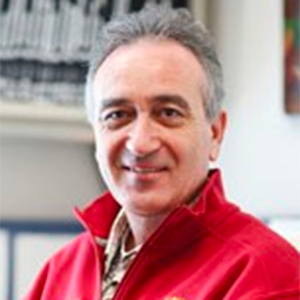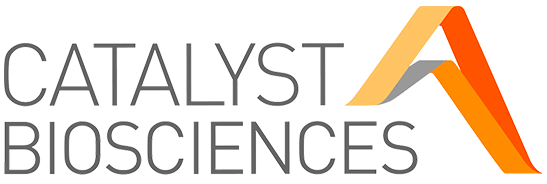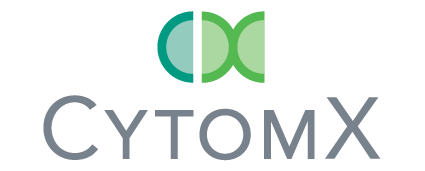Oct. 28–30, 2021 | Virtual
Serine Proteases
in Pericellular Proteolysis and Signaling
Serine proteases in pericellular proteolysis and signaling
Oct. 28–30, 2021
The virtual meeting on Serine Proteases in Pericellular Proteolysis and Signaling continues the tradition of the ASBMB special symposium on membrane-anchored serine proteases with an expanded focus on other related proteases with overlapping substrates and functions in the pericellular environment.
The conference traditionally brings together the leading national and international researchers in the field of pericellular proteolysis and provide them with a forum to present their latest findings, exchange ideas and technologies, and network to form collaborations. Equally important, it also provides a venue for junior investigators at the graduate student and postdoctoral level to discuss their current research, meet with experts in the field and forge new scientific interactions crucial for their future career development. To this end, we plan an interactive poster session and easy access to poster presenters' video recordings to increase the visibility of their work. Holding the meeting virtually provides a unique opportunity to make this conference even more accessible to students as well as to investigators from other fields where pericellular proteolysis is implicated.
Topics covered
Cleavage of proteins in the extracellular environment, including hormones, growth factors and their receptors, ion channels, cell adhesion molecules and structural components of extracellular matrix, plays a key role in the regulation of cell behavior. Among more than 500 proteolytic enzymes encoded by mammalian genomes, membrane-anchored serine proteases, which are expressed on the cell surface in all major organs, are excellently suited to mediate signal transduction across the plasma membrane and are increasingly being recognized as important regulators of organ development and homeostasis. At the same time, unrestrained pericellular proteolysis has been shown to contribute to epithelial and endothelial barrier dysfunction, inflammatory, cardiovascular, and respiratory diseases, as well as cancer. Many of the influenza- and coronavirus-type viruses, including SARS-CoV-2, are now known to also use activity of these proteases to gain entry into the target cell, making MASPs a major determinant of cell susceptibility to infection.
In addition to the roles of serine proteases in viral biology, the meeting will cover topics including biosynthesis, trafficking and post-translational modifications, endogenous and pharmacological inhibitors, developmental and other physiological functions, mechanisms of dysregulation and pathological consequences, and molecular mechanisms of protease-mediated signaling.
Organizers

Roman Szabo
National Institute of Dental and Craniofacial Research, NIH
Program schedule
All times listed are U.S. Eastern Daylight Time (GMT-4)
Thursday agenda
Session 1: Proteases in viral biology
Session chairs:
- Klaudia Brix, Jacobs University
- James Harte, University College Cork
Session 2: Development and physiology
- Celine Deraison, Digestive Health Research Institute
- Joy Armistead, University of Cologne
Session 3: Inflammation and immunity
- Karin List, Wayne State University School of Medicine
- Fabienne Birkle, University of Michigan
Flash talks
Characterizing the post-translational modifications of the pro-oncogenic protease TMPRSS13
Carly Martin, Wayne State University
New perspectives of aging: TMPRSS11a as a new target
Christian Fernandez, Universidad de Chile
Engineering serpin-based inhibitors for the specific and selective inhibition of furin and other proprotein convertases
Gonzalo Izaguirre, University of Illinois
Design and characterization of fluorescent activity-based probes for imaging fibroblast activation protein (FAP) activity in the tumor microenvironment
Yentl Van Rymenant, University of Antwerp
Improving protease cleavage site prediction with AlphaFold database 3D structural data
Evgenii Matveev, Skolkovo Institute of Science and Technology
Development of a custom protease design pipeline, incorporating high-throughput experimentation, computational structure prediction and machine learning
Joseph Lubin, Rutgers University–New Brunswick
Contribution of pericellular cysteine cathepsins to priming of the SARS-CoV-2 spike protein at cilia of thyroid epithelial cells
Klaudia Brix, Jacobs University
The structure of SARS-CoV-2 spike glycoprotein complex with human fruin and TMPRSS2 and its genetic variants, insights the mechanism of viral activation and entry
Naveen Vankadari, Monash University
Enoxaparin augments alpha-1-antitrypsin inhibition of TMPRSS2 activity: a promising drug combination against COVID-19
Ashley Buckle, Monash University
Friday agenda
Session 4: Biosynthesis, structure and cellular regulation
- Qingyu Wu, Soochaw University
- Frida Berlin, Lund University
Flash talks
The protease corin regulates glucose, lipid and energy metabolism in mice
Xianrui Zhang, Soochow University
Interaction of Dengue virus non-structural protein 3 protease domain with its co-factor, NS2b, and mechanism of substrate specificity
Armul Simanchal Dora, National Institute of Science Education and Research
Chymotrypsin in the gut: more than just a food digestion enzyme
Simon Guignard, Inserm
ST14 mutations causing ichthyosis-hypotrichosis syndrome causes the production of matriptase devoid of the ability to activate prostasin
Lasse Holt-Danborg, University of Copenhagen
The membrane anchored serine protease (MASP) matriptase in ovarian cancer dissemination and metastasis
Nisha Pawar, University of Maryland, Baltimore
A sphingolipid rheostat downstream of matriptase-1 / ST14 controls apoptosis and apical cell extrusion in zebrafish hai1a mutant epithelium
Joy Armistead, University of Cologne
A serpin from tick saliva inhibits kallikrein-initiated intrinsic pathway of blood coagulation
Jan Kotál, National Institutes of Health
Human and mouse kallikrein-related peptidases 7 (KLK7) undergo autolysis, providing a potential additional layer of negative proteolytic regulation
Swapnil Ghodge, Genentech Inc.
Session 5: Cancer development and progression
Session chairs:
- Grant Blouse, Catalyst Biosciences
- Nisha Pawar, University of Maryland, Baltimore
Poster discussion session
Saturday agenda
Session 6: Development of tools for imaging and diagnosis
Session chairs:
- Toni Antalis, University of Maryland School of Medicine
- Lasse Holt-Danborg, University of Copenhagen
Session 7: Targeting protease activity in human disease
Session chairs:
- Lucas Tirloni, National Institute of Allergy and Infectious Diseases
- Carly Martin, Wayne State University




